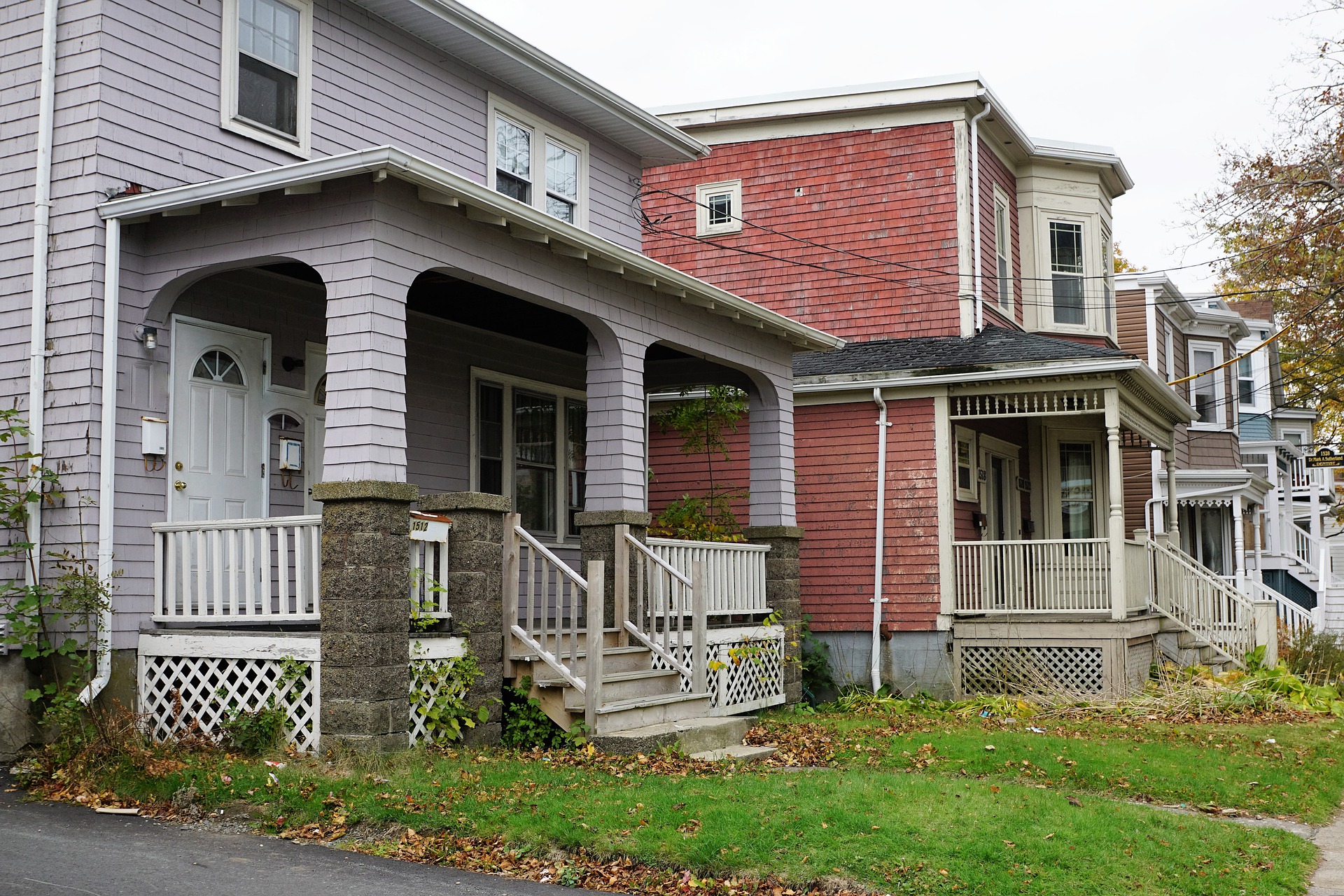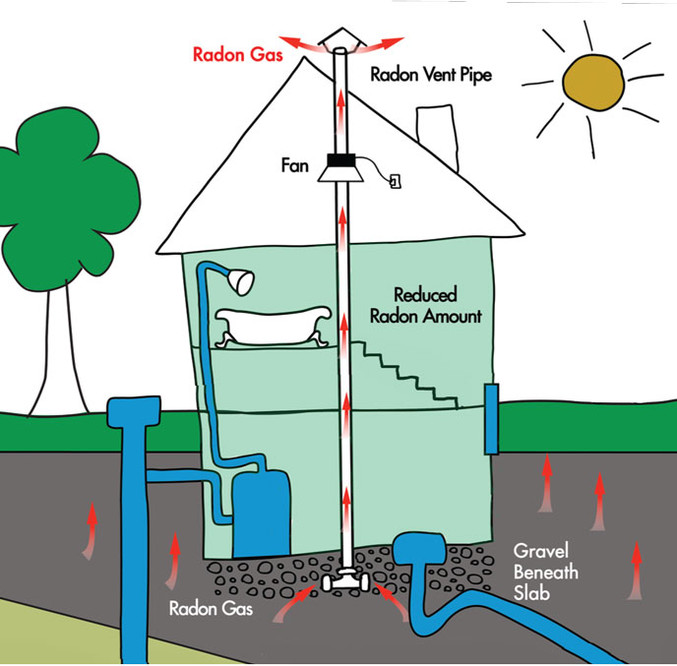Want more information about financial support for home radon mitigation?
Click here to learn more about our LUNGS MATTER grant program.
*Note that the LUNGS MATTER grant cannot be used to reimburse already-completed mitigations.*

- What's the big deal about radon?
- How does radon get into your house?
- How can I test my home for radon?
- What do my test results mean?
- How can I reduce the amount of radon in my home?
- How can I get financial support to pay for home radon mitigation?
- My company offers home radon mitigation. How can I help?
What's the big deal about radon?
Radon is the second leading cause of lung cancer in Canada. Radon exposure is estimated to be the cause of 16% of lung cancers.
Radon is an invisible, odorless gas. You can't see radon. You can't smell it or taste it. But it may be a problem in your home.
Radon comes from the natural breakdown of uranium in soil, rock and water. Radon gas escapes from the ground into the air outside. When radon mixes with the air outside, it’s not a problem: the air outside dilutes the amount of radon. But when radon seeps into a closed-in space like a house, it can be harmful. Radon decays quickly, giving off tiny radioactive particles, which can become trapped inside. You and your family can breathe in high levels of radon without knowing it. When inhaled, these radioactive particles can damage the cells that line the lung. Long-term exposure to radon can lead to lung cancer.
If you live in a building with high radon levels or if you spend a lot of time in one, you are at higher risk for lung cancer.
If you smoke and you live in a home with a high level of radon, you are at an even higher risk for lung cancer.
How does radon get into your house?
 Radon can come out of the soil and water and seep into cracks and openings in your home, especially on the lower floor, basement, or crawlspace. Radon gas can get into your home through many openings, including:
Radon can come out of the soil and water and seep into cracks and openings in your home, especially on the lower floor, basement, or crawlspace. Radon gas can get into your home through many openings, including:
- unfinished floors
- pipes
- windows
- sump pumps
- cracks in the basement floor or foundation
Radon can get trapped inside your home, especially in basements and crawlspaces that don’t have good ventilation (air flow).
How can I test my home for radon?
The only way to know if your home has radon is to test for it. Be sure to get a long-term radon test.
You can purchase radon tests and monitors here.
Follow the instructions that come with your radon test. In general, you:
- Put the test device on the lowest level of your house that you use regularly (the level where you spend four hours a day or more). This could be your basement or your main floor.
- Make sure the test device is in a safe place, where it won’t get knocked over.
- Leave the test device in place for at least three months.
- Mail the test device to the company’s laboratory. The test will come with a mailing label and package. All you have to do is put the test device in the package and drop it in a post box.
- The company will analyze test device in their laboratory and mail you the results.
It’s best to test for radon over the winter months, when there is less ventilation (less air movement) in your home.
What do my test results mean?
What you do depends on how much radon there is. Radon is measured in becquerels per cubic metre (Bq/m3).
- If your home’s radon level is less than 200 Bq/m3, Health Canada radon guidelines say that no action is required. However, even low levels of radon can be harmful. It’s a good idea to try to lower your home’s radon level as much as possible, even if it’s already below 200 Bq/m3.
- If your home’s radon level is between 200 and 600 Bq/m3, you should repair your home in the next two years.
- If your home’s radon level is over 600 Bq/m3, you should repair your home within one year.
How can I reduce the amount of radon in my home?

Lowering radon levels in a home requires specific technical knowledge and skills to ensure the job is done properly. Make sure to hire an experienced, reputable contractor to mitigate your home.
Contact Canadian National Radon Proficiency Program (C-NRPP) at 1-855-722-6777 or visit the Take Action on Radon website for a list of certified service providers who can help reduce the level of radon in your home.
How can I get financial support to pay for home radon mitigation?
The cost of mitigation varies across the country. The Lungs Matter: Home Radon Mitigation Grant Program provides up to $1,500 towards home radon mitigation for eligible applicants.
My company offers home radon mitigation. How can I help?
If you offer home radon mitigation services, you can become a National Mitigation Sponsor of our LUNGS MATTER program.
As a Sponsor, every $1,500 you contribute helps cover the cost of radon mitigation for one deserving household anywhere in Canada or in a province or territory of your choice.
Find out more about LUNGS MATTER home mitigation sponsorship opportunities.
Purchase a test kit or monitor
You can purchase radon test kits and monitors through the Canadian Lung Association here.

